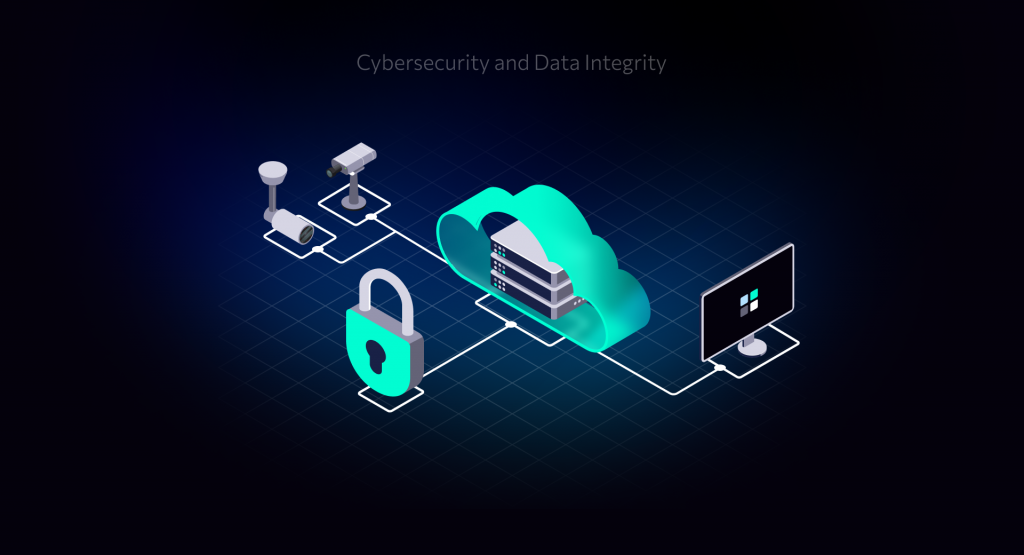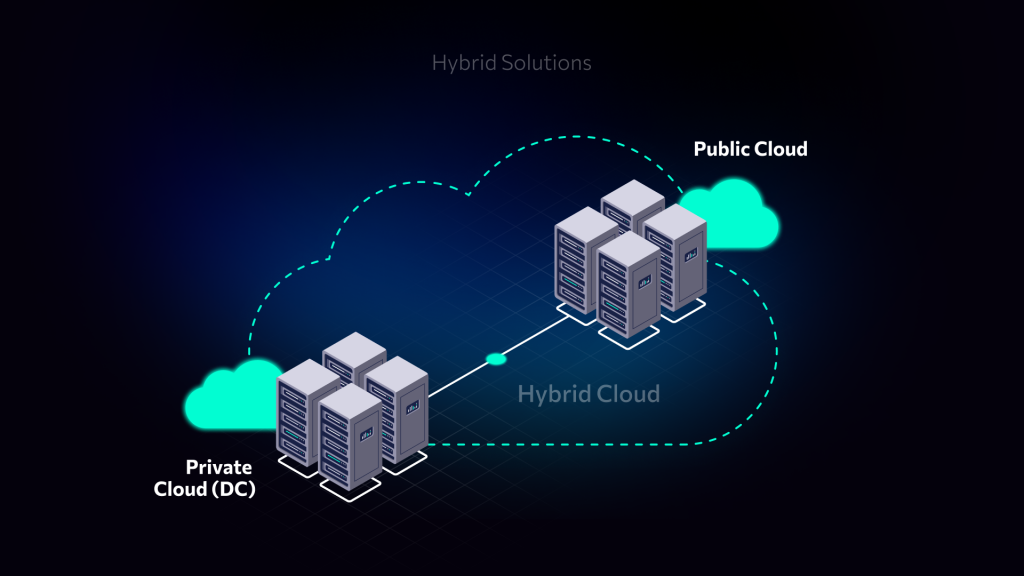In the early days of video surveillance, the setup was often cumbersome and inflexible, involving static cameras tethered to limited storage on physical tapes, all monitored by ever-present security personnel. Cloud Video Surveillance is expanding such a system was no small feat; it meant installing additional cameras, provisioning more servers, and absorbing a significant increase in costs – both for equipment and manpower to install and maintain it.
Contrast that with today’s landscape, where cloud technology is changing how we approach surveillance. Now, to upscale your surveillance capabilities, you simply connect additional cameras to the cloud system, which stores and processes the data.

Cloud technology not only simplifies the user experience with easy setup and maintenance, automatic software updates, and secure remote access from any location but also transforms the economic model with its pay-as-you-go approach. This evolution is more than just an adoption of new technology; it marks a significant stride towards enhancing the efficiency and adaptability of video surveillance systems, making cloud technology an increasingly preferred solution in this domain.
Key Factors Behind the Transition of Video Surveillance Services to the Cloud
Cloud technology is set to take over video surveillance in the coming years, and there are a few big reasons why this is happening. Let’s look at what’s driving this change and why more people are choosing the cloud for keeping places safe:
Setup and Maintenance
Setup and maintenance stand out as two of the most commonly cited advantages of VSaaS. These systems are renowned for their plug-and-play connectivity with cameras and automatic software updates, significantly streamlining the installation process. With VSaaS, cameras effortlessly connect and appear on the platform, provided they have an Internet connection.
This ease of connection contrasts starkly with the complexities of setting up a traditional VMS that requires third-party camera support. Such simplicity not only speeds up the process but also reduces the dependency on integrators or advanced technical knowledge, making VSaaS an increasingly user-friendly option in the realm of video surveillance
Access Flexibility
The cloud model breaks geographical barriers by allowing the users to access to the video feeds from any location with internet availability. Whether through computers, smartphones, or tablets, stakeholders can monitor their premises without being physically present, a revolutionary advantage for businesses with multiple locations or for individuals needing to oversee their property remotely.
Cybersecurity and Data Integrity
Cybersecurity is arguably the biggest benefit of VSaaS, particularly for remote monitoring. The system provides secure access directly via an Internet connection, bypassing the need for firewall configuration or a VPN client to connect the cameras. This ensures a streamlined and safer user experience. In traditional video surveillance setups, a common vulnerability lies in the publicly accessible ports on an NVR or VMS, often exposed through user’s firewall or router configurations. In contrast, VSaaS simplifies this by offering an automatic connection to the cloud platform. This direct connection to the cloud service means there are no open ports or insecure firewall configurations required.

Additionally, VSaaS takes the lead in addressing firmware and software vulnerabilities. These updates, crucial for maintaining the integrity of the system, are handled quickly and remotely by the VSaaS provider, without the need for user or integrator intervention.
This proactive approach to cybersecurity is complemented by the robust measures implemented by cloud providers, including encryption and strict access controls. These providers are popular for their expertise in data protection, ensuring the confidentiality and integrity of video feeds and recordings.
Updates and Security
Frequent and automatic software updates are pivotal advantages of cloud-based surveillance systems, ensuring the prompt implementation of the latest features and swift addressing of vulnerabilities. This approach significantly simplifies the maintenance and update process, offering a stark contrast to the often complex procedures associated with most traditional VMSes.
Additionally, cloud service providers invest heavily in cyber defenses and physical security of server centers, which is crucial for the prevention of data breaches and unauthorized access, thereby securing the privacy and continuity of video surveillance feeds.
Analytics and Artificial Intelligence
The demand shift to the cloud is lead by integrating advanced analytics and artificial intelligence (AI) within video surveillance platforms. The cloud enables extensive automation in video processing tasks like facial recognition, motion detection, and object classification, leveraging the power of AI. This technology not only streamlines surveillance operations but also allows for the enhancement of analytics algorithms which fit on a large scale to video data from multiple sources.
In line with these advancements, VSaaS analytics has potential for high accuracy, overcoming the limitations of traditional on-site systems. They can offer sophisticated analytics methods by harnessing cloud resources and AI to provide efficient and insightful surveillance solutions.
Cloud Video Surveillance: integration and compatibility with other systems
Cloud services are popular with their ability to act as a central hub, integrating different systems and information sources into a single, easy-to-use interface. This integration is possible by Open APIs and well-established communication protocols, enabling smooth interactions between various systems. Cloud platforms make everything available in one place, so it’s easier for people who run these systems to access, monitor, and maintain them. Plus, cloud services can connect with important business tools like payment systems, customer relationship management (CRM), and billing thus providing seamless service provisioning. This makes everything work together seamlessly, making things easier for both the people who manage these systems and their users.
Scalability
The cloud-based approach to video surveillance affords businesses the flexibility to expand their number of cameras and storage capacity with ease. This means a business owner can enhance their security systems without the logistical and financial burdens of traditional equipment upgrades. Cloud infrastructure enables swift adaptation to changing surveillance demands, ensuring that as a business grows, its security measures can grow with it.

Economic Efficiency
The physical security industry is increasingly adopting a Software as a Service (SaaS) business model, where customers prefer operating expenses over large, upfront capital investments. This shift towards cloud services not only transforms the associated security costs for businesses but also significantly reduces hardware and maintenance expenses.
The inherent subscription payment model of cloud services offers a more manageable and budget-friendly expense structure, allowing businesses to select only the services they need. This approach enables businesses to optimize their investments while still ensuring access to top-tier surveillance capabilities.
Improved Broadband Connectivity
The proliferation of high-speed internet, driven by advancements in fiber optics and 5G networks, is a key factor in the cloud transition. These technologies support the transmission of high-quality video, which is crucial for effective surveillance. Additionally, the increasing use of efficient video codecs like H264, H.265, and smart codecs, especially in 2023, has made this transition smoother by reducing bandwidth requirements. This development, coupled with the decreasing cost of bandwidth, is making remote and mobile monitoring solutions more financially viable than ever before.
For telecom companies, these technological advancements present a strategic advantage. With their core infrastructure already optimized for high-bandwidth operations, telecoms are ideal performer to capitalize on this transition. This puts them at the forefront of the growing cloud-based surveillance market, allowing them to leverage their existing capabilities to offer enhanced surveillance services.
Data Storage and Archiving in Cloud Video Surveillance
Cloud platforms revolutionize data storage possibilities by eliminating the need for costly internal hardware and physical media. They guarantee the integrity of data through architectures designed for redundancy and fault tolerance, essential for long-term storage solutions. With cloud services, video data is not only securely stored but also centralized, making it accessible from anywhere in the world, an invaluable benefit for global operations that require constant and immediate access to surveillance archives.
The Power of Network Effects
In the past, the type of cameras used in one building didn’t impact neighboring systems, as surveillance setups were usually independent, and sharing information between them was, at best, a complex task. But with the advent of cloud systems, the scenario has changed dramatically.
These systems often have built-in data sharing capabilities, which means there’s a clear advantage to using the same technology as those around you. This creates a ‘Network Effect’ where the usefulness of the system increases as more people use compatible products and opt into similar services. The more users there are, the more valuable the shared data becomes for everyone involved.
Add-on sales
Cloud-based platforms offers a variety of additional services and features, starting from basic Video Surveillance as a Service (VSaaS). Customers have the opportunity to enrich their experience with a range of add-ons like video analytics, smart intercom systems, Access Control as a Service (ACaaS),
This approach not only amplifies the capabilities of the cloud platforms but also significantly boosts customer loyalty and convenience. It showcases the adaptability and growing influence of cloud services in addressing a wide array of customer needs.
Hybrid Solutions
Cloud technologies excel in providing adaptable solutions that combine the benefits of local and cloud resources. Hybrid systems cater to the needs of video surveillance operations that require local video processing and storage, yet still benefit from cloud services for enhanced analytics, backup storage, or for providing remote access and management capabilities. This blend is particularly useful for entities that have to balance immediate responsiveness with the advantages of cloud computing power and accessibility.

The Way Forward
The transition to cloud-based video surveillance is a step beyond merely following a market trend – it’s about actively shaping the future of business offerings and establishing a stronghold in the new era of digital security. This movement is particularly pivotal for telcos. With their extensive resources in IT, sales, marketing, and installation, they have ready-to-work equipment to lead this evolution. Their expertise in building IT infrastructures empowers them to not only embrace but drive this new trend.
As we conclude our discussion on the ascent of cloud video surveillance, it’s evident that for telecom companies, this isn’t just an emerging trend – it’s their next definitive stride, with a straightforward pathway: dive into cloud innovation, solidify trust through uncompromising data protection, and ensure that every advancement delivers clear, value-driven results to customers.
Start your Aipix journey with expert guidance — reach out for a free consultation.



